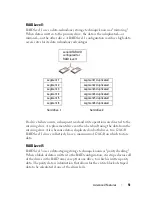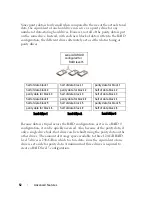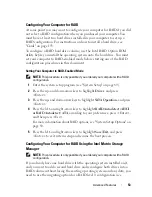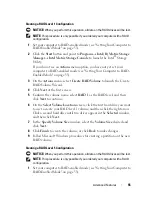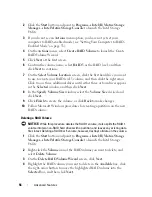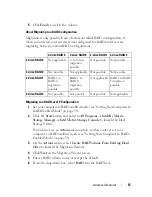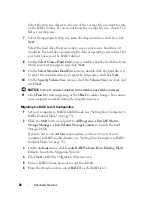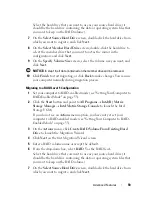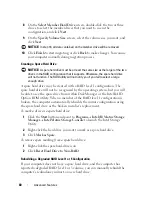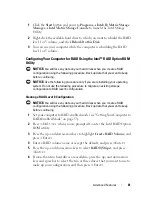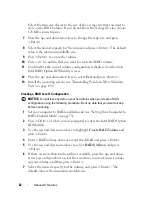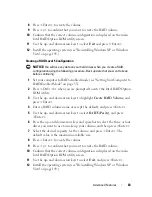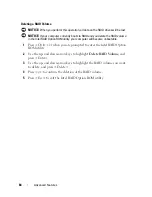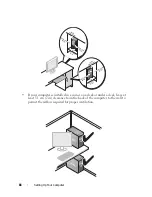
Advanced Features
51
RAID Level 1
RAID level 1 uses a data-redundancy storage technique known as "mirroring."
When data is written to the primary drive, the data is then duplicated—or
mirrored—on the other drive. A RAID level 1 configuration sacrifices high-data
access rates for its data redundancy advantages.
If a drive failure occurs, subsequent read and write operations are directed to the
surviving drive. A replacement drive can then be rebuilt using the data from the
surviving drive. Also, because data is duplicated on both drives, two 120-GB
RAID level 1 drives collectively have a maximum of 120-GB on which to store
data.
RAID Level 5
RAID level 5 uses a data-staging storage technique known as "parity checking."
When a block of data is written to the RAID configuration, it is striped across all
of the drives in the RAID array except for one drive, to which is written parity
data. The parity data is information that allows for the entire block of striped
data to be calculated if one of the drives fails.
hard drive 1
segment 1
segment 2
segment 3
hard drive 2
segment 4
segment 5
segment 6
segment 1 duplicated
segment 2 duplicated
segment 3 duplicated
segment 4 duplicated
segment 5 duplicated
segment 6 duplicated
serial ATA RAID
configured for
RAID level 1
Summary of Contents for Precision NX046
Page 1: ...w w w d e l l c o m s u p p o r t d e l l c o m Dell Precision T5400 User s Guide Model DCTA ...
Page 18: ...18 Finding Information ...
Page 43: ...About Your Computer 43 ...
Page 44: ...44 About Your Computer ...
Page 88: ...88 Securing Your Computer ...
Page 120: ...120 Troubleshooting ...
Page 140: ...140 Troubleshooting Tools ...
Page 238: ...238 Adding and Replacing Parts 1 drive panel tabs 2 drive panel 2 Tower Orientation 1 ...
Page 286: ...286 Adding and Replacing Parts ...
Page 287: ...Adding and Replacing Parts 287 ...
Page 288: ...288 Adding and Replacing Parts ...
Page 296: ...296 Getting Help ...
Page 316: ...316 Glossary ...















